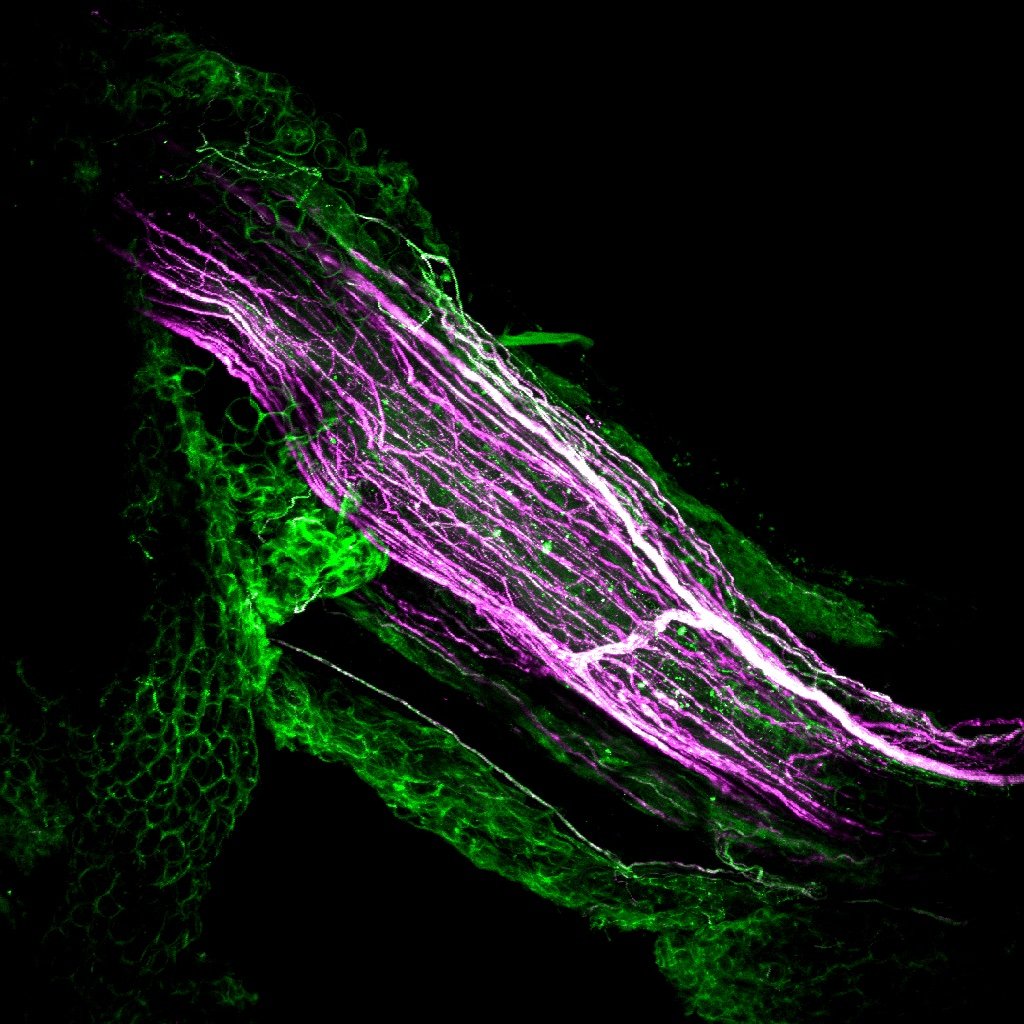
We seek to understand mechanisms of nervous system-organ crosstalk

While we are aware of a few conscious sensations in our internal organs, such as a full bladder or a painful stomach cramp, internally innervating sensory neurons perform unconscious roles in regulating physiology that are increasingly appreciated. We know that ascending sensory input triggers descending neuronal and hormonal outputs – that is, sensory neurons perform “non-sensory” roles. By merging our expertise in neuroscience and physiology, we aim to understand how these systems cooperate to maintain homeostasis and conflict to drive pain and inflammation.
Sensory neurobiology of the kidneys
The mammalian kidneys carry out nearly a dozen physiological functions, including the filtration of blood, maintaining fluid homeostasis, and excretion and reabsorption of salts. The kidneys do not run on autopilot – they continuously tune their functional outputs to meet the body’s demands. How they accomplish this regulation is unknown. Despite the kidneys receiving substantial sensory innervation, we are typically unaware of our kidneys except under extremely painful conditions such as kidney stones or infection, and, even so, there exists no animal model for renal pain. As such, the functions of renal sensory nerves represent a glaring knowledge gap. In the ION Lab, we are tackling major questions in neurobiology – from behavior down to molecular mechanism – providing the necessary foundation for our lab to shed light on the role of sensory innervation of the kidney.

